-
FREE MEMBER
NO Posting or PM's Allowed

questions about my Ross M10
-
01-30-2013 07:14 PM
# ADS
Friends and Sponsors

-
FREE MEMBER
NO Posting or PM's Allowed

Two more pics: This first one...I just noticed a "U" very faintly in the wood....can you see?
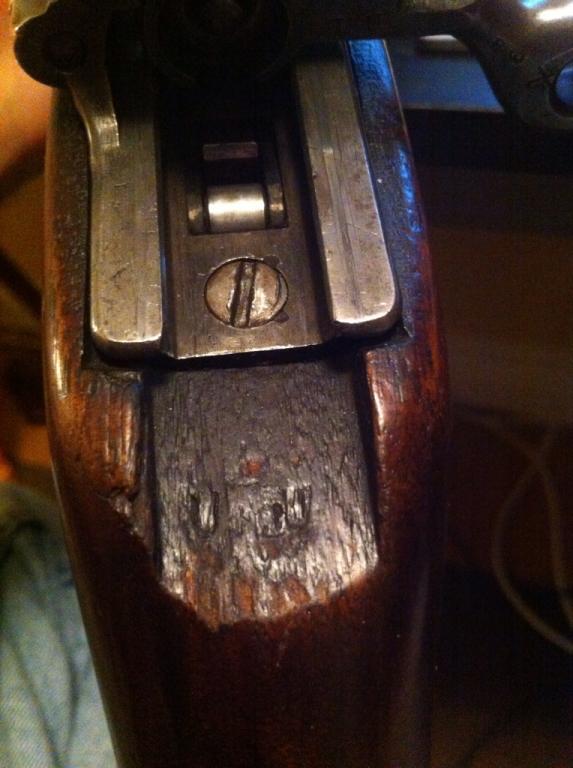
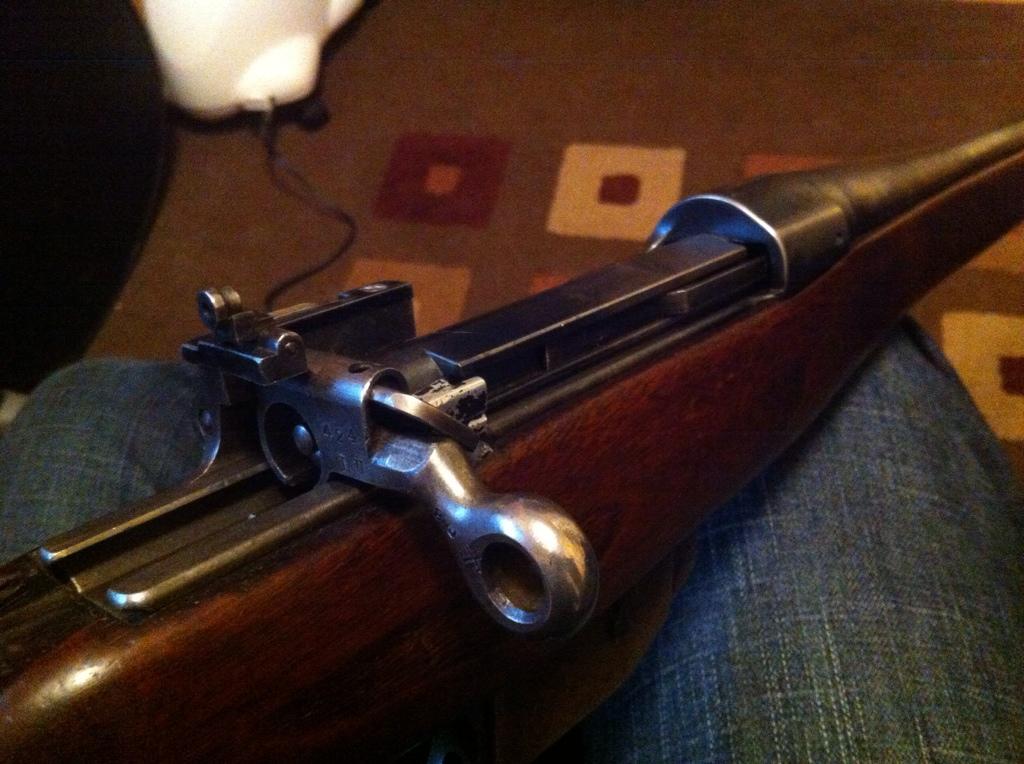
-
-
Advisory Panel


Okay, friend, let's have at her!
First off, you can download a MANUAL for this rifle from the Military Knowledge Library on this site. Get "Ross Rifles - 1915" and ALSO get "Shoot To Live!", which is th best manual ever written on marksmanship with iron-sighted rifles with aperture sights..... which is what you have.
on this site. Get "Ross Rifles - 1915" and ALSO get "Shoot To Live!", which is th best manual ever written on marksmanship with iron-sighted rifles with aperture sights..... which is what you have.
First question: how long is your barrel? Factory length on these was 30.5 inches, measured from the face of the closed Bolt to the Muzzle. Measuremnt was with a cleaning-rod inserted the full length of the barrel and butting against the closed bolt.
I note that your rifle HAS the PIN down through he Shank of the Bolt Sleeve. This prevents the rifle from ever bing assembled incorrectly (and dangerously) but it also makes disassembly and (especially) assembly utterly miserable if you are not careful. This PIN was added by the Army while the Ross was still the standard combat rifle.
The marking on the Butt Plate is one which I have not seen. Likely it will be a regimental Rack Number.
Your rifle HAS the E-for-Enlarged chamber marking. Not to worry; it was just enlarged to handle lousy British ammunition and is no larger than a Lee-Enfield chamber. For best accuracy and longest case life (and, with a Ross, case life can be almost infinite with mild loadings) use Ed's Famous O-Rings (or pony-tail ties from the Dollar Store: I just got 500 for a buck) on your ammo the first time a new cartridge is fired. You put the O-Ring on the base of the round, just ahead of the Rim. This compresses as the round is chambered, giving you perfect headspacing and your brass fireforms perfectly to YOUR chamber. You then keep that brass separate and reload for this rifle. You do not need to use the O-Ring trick again unless the brass is full-length resized in the future. Once it is used, you neck-size only and watch your groups pucker up to almost nothing. Works.
ammunition and is no larger than a Lee-Enfield chamber. For best accuracy and longest case life (and, with a Ross, case life can be almost infinite with mild loadings) use Ed's Famous O-Rings (or pony-tail ties from the Dollar Store: I just got 500 for a buck) on your ammo the first time a new cartridge is fired. You put the O-Ring on the base of the round, just ahead of the Rim. This compresses as the round is chambered, giving you perfect headspacing and your brass fireforms perfectly to YOUR chamber. You then keep that brass separate and reload for this rifle. You do not need to use the O-Ring trick again unless the brass is full-length resized in the future. Once it is used, you neck-size only and watch your groups pucker up to almost nothing. Works.
The FLAP to which your finger is pointing in Picture 5 is the combination Magazine Cutoff/Bolt Release. It was stolen from the 1903 Springfield and works the same.
Flap UP, the rifle works as a Magazine Rifle, feeding from the Magazine.
Flap straight OUT, you remove the Bolt
Flap DOWN, the rifle works as a single-shot with the Magazine in reserve. The Bolt is prevented from going far enough rearward to pick up a round: simple.
Your 424LU, most likely, is the remains of the original Serial Number. The FULL number would have been on the right side of the Butt and included number (424), letter group (LU) and YEAR of production, which would have been 1914, 1915, 1916 or 1917. I have a couple of rifles here with Bolt numbers and both have had the Bolts pinned, as yours. I believe that the number was added in the field workshops which pinned the Bolts, in order that the proper Bolt could be reassembled to a given rifle. Modding the Bolts was rather an involved process and it would have been too-easy to mix up the carefully-fitted Bolts without some means if identification. If the Stock has not been sanded TOO much, you can sometimes bring out the original markings with a Black Light Bulb (local dollar store, 75 cents). This is a high-intensity UV bulb, so shield your eyes from the direct rays.
I note that your rifle is missing the Charger Guide, which was a part of the (mangled) Rear Sight Bridge. You will have to load the Magazine with single rounds. You have the left HALF of the Sight Bridge with its tiny (impossible to find) screws. The rear sight on the rifle today is a commercial sight of a type preferred by many iron-sight hunters in the days before telescopes were rugged enough and cheap enough to see common usage. It will be zeroed at some particular range only (likely 200 yards) and adjustment for longer ranges would have been by hold-over. Given the very long sighting radius possible with this set-up, your rifle could shoot as accurately as most scoped rifles in a hunting or informal range situation. Rosses can be quite astoundingly accurate. Grandpa knew his rifles, that's for sure!
The Butt Trap (picture 3) was where you kept your oil-bottle, bit of cotton 4x2 patches and your Pull-through. These were the same as for the British rifle except that the Ross Oil Bottles were turned brass and Canadian -marked.
-marked.
Your woodwork looks to have been slimmed-down considerably. That was common with civilianised Rosses, the rifle as-issued being heavy. Wood commonly was removed because most people did not have the tools to shorten the long barrels and, besides, "everybody knew" that a long barrel "shot harder". In this, "everybody" was right; the Ross fires the same ammunition as a Lee-Enfield, but the Ross puts the same bullet out more than 100 ft/sec faster with ammo from the same box. I have chronographed it myself.
Your Ross is a fair way from being strictly military, but it is a Family piece. When it was made, it was the finest rifle in the world. Today it is close to 100 years old and it will STILL give modern rifles a run for their money. There are VERY few century-old rifles that you can COUNT ON to do that. Keep your 2 Action Screws tight for good shooting.
You have a Keeper for sure.
Hope this helps.
-
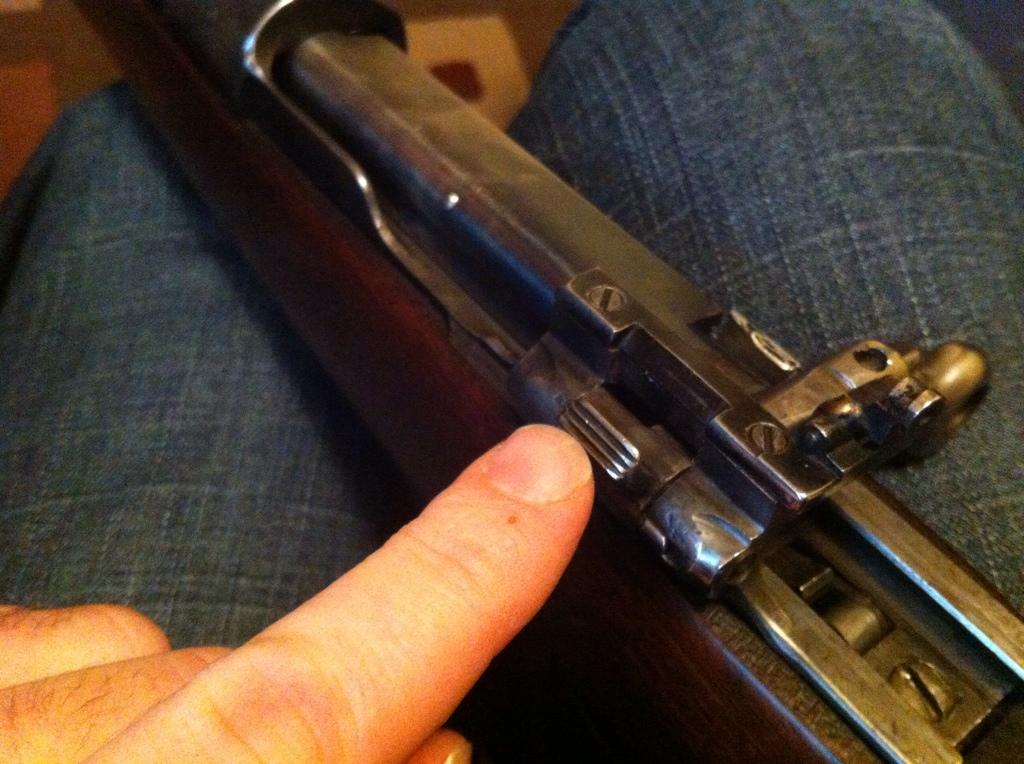 Information
Information














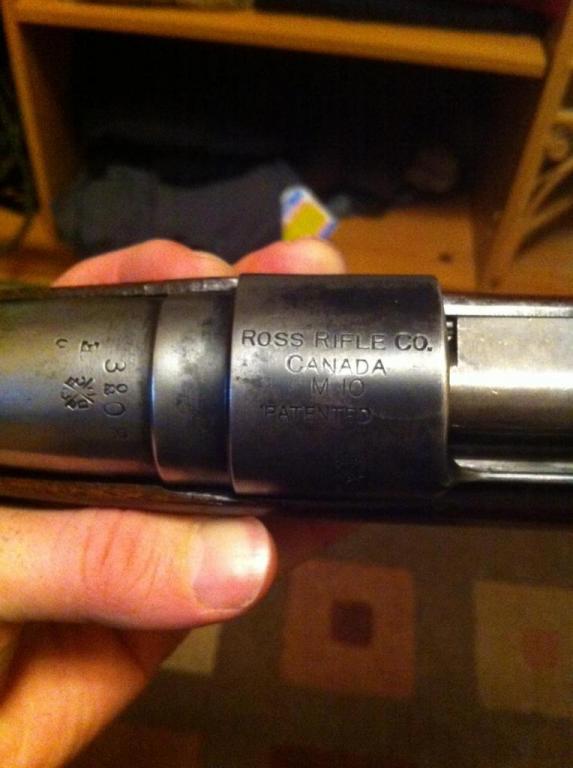
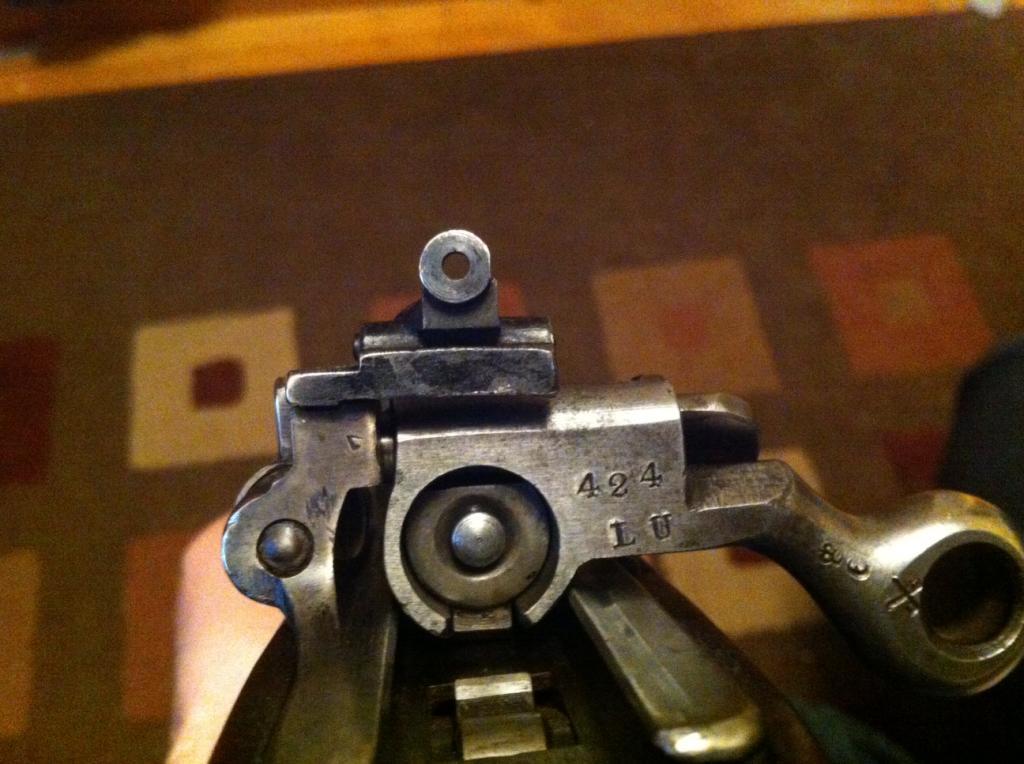
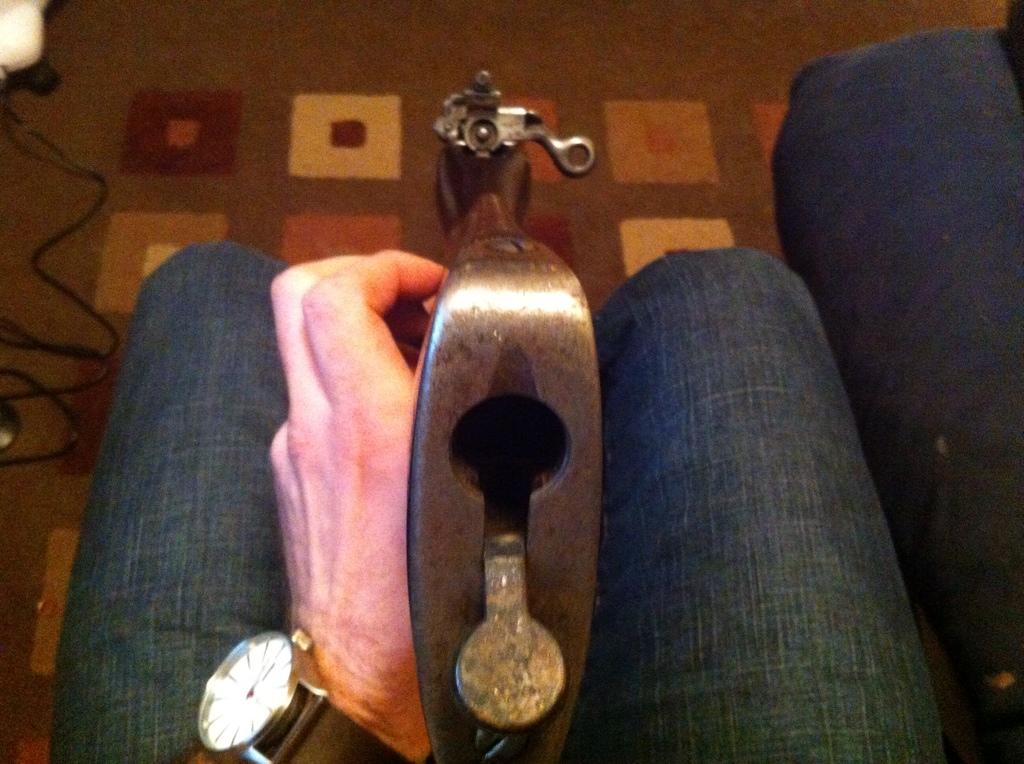
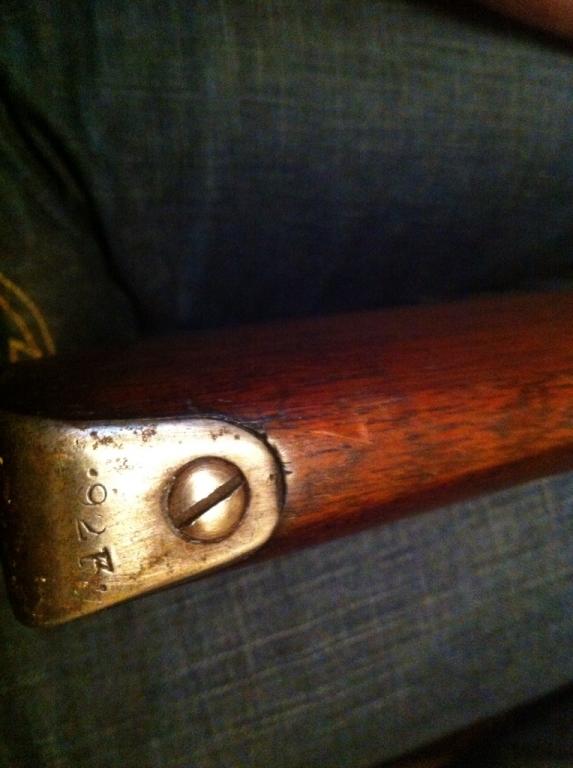
 Register To Reply
Register To Reply












